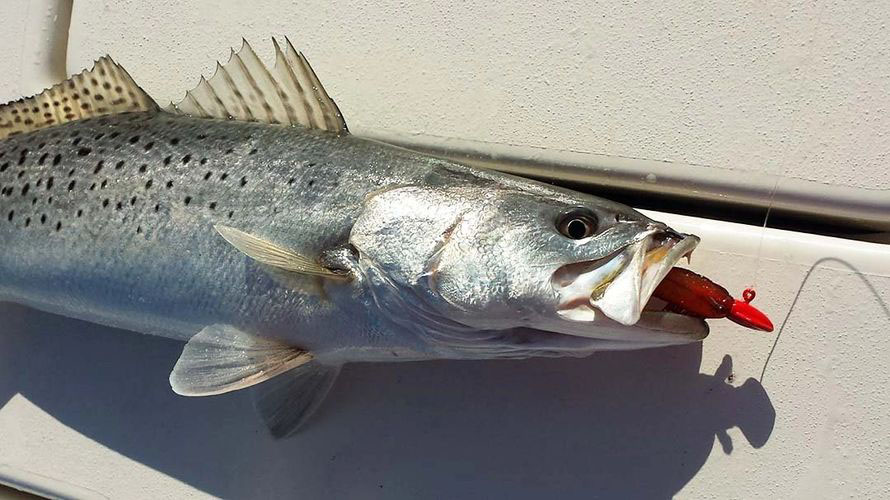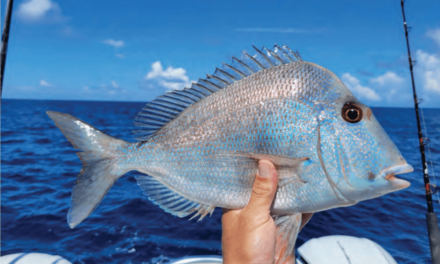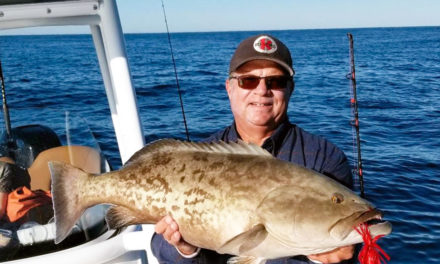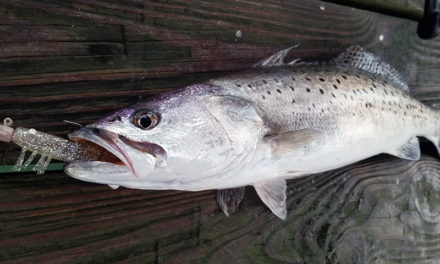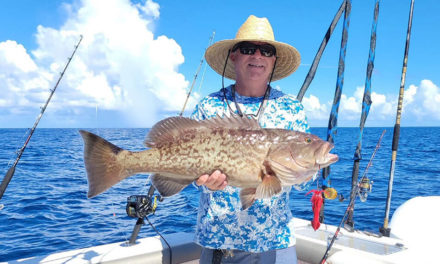Now (February thru March) is the time of year when the inshore bite can slow down or get hot as a firecracker, especially for speckled trout.
Right now, bait size can make all the difference between stacking ’em up and getting skunked. Of course, live baits are really the best bet when things get tough, but for hard-headed anglers—like me—who prefer artificials, it’s important to use smaller profile baits and slow down the retrieve considerably.
I know a guy who scales down to crappie-size jigs through the coldest stretches of February and March.
I prefer a smaller version of the same shrimp I always use. I usually throw the 4-inch shrimp on a Barefoot jig head, but I like the 3-inch size when it gets cold. There is not a time of the year when fish won’t eat shrimp; there are only a few weeks of the year when they won’t eat the 4-inch version.
I usually throw the bigger shrimp because the old saying, “bigger bait, bigger fish,” holds true for seatrout. But like I said earlier, the biggest trout caught during February and March will eat crappie-sized jigs… so, there goes that theory.
For the most part, though, I like bigger shrimp to eliminate as many of the dink trout bites as possible, but even the dinks will give the biggest shrimp you throw a whack. When you miss a bite, I always say, “don’t worry about it; it’s a dink.” Trout always eat a shrimp from behind, so they can fold it up and swallow it with the horn going forward. Always. A missed bite usually means the fish didn’t have a mouth large enough to “inhale” your shrimp backward.
Another key ingredient to getting bites in cold water is the retrieve speed. It’s a perfect situation to use a sliding cork or a fixed-depth cork. For example: If you’re in water 6 feet deep and you want to slow the bait way down, set the stop at 5 feet and just let the cork stand up and drift the same speed as the current, or if there is no current, just barely slow-take a wind on the reel to keep the bait moving forward. Don’t twitch the bait; just barely move it forward, and always use a shrimp scent like Pro-Cure Shrimp.
Barefoot TACKLE YOU MAY WANT TO TRY:
For smaller freshwater fish, try the following:
Size #6: Target fish include Panfish, Bluegill (Bream), Sunfish, and Crappie. Also great for Trout, Carp, White Perch, and more.
For larger freshwater fish, try the following:
Size 1/0: Target fish include Largemouth Bass, Smallmouth Bass, Larger Trout, Carp, Walleye, Catfish, and more.
Barefoot Jig: Target fish include Trout (speckled and gray), Drum (red and black), Flounder, Striped and Hybrid Bass, Catfish, Largemouth Bass, Smallmouth Bass, Walleye, and more!
For larger catfish fish try:
7/0 Catfish Circle Hook: Target fish include Blue, Bullhead, Channel, Flathead, and White Catfish.
SALTWATER TACKLE YOU MAY WANT TO TRY:
7/0 and 11/0 J-Hook Chin Weights: Target fish include Tuna, Wahoo, Mahi or Common Dolphin, King Mackerel, Wahoo, and more. Easy to rig!
4 oz. Crab Decoy Jig: Target fish for Striped Bass, nearshore Drum, Snook, Grouper, west coast bottom fish, and more.
4 oz. Tuna Squid Decoy Jig: From the eastern, western, Alaskan, and gulf coasts, target fish include: Tuna, Dolphin, Wahoo, Fluke, Flounder, Striped Bass, Seabass, Amberjack (east coast), Yellow Tail (west coast), California White Sea Bass (west coast), Grouper, Snapper, Halibut, Ling cod, and all Alaskan bottom fish.
8 oz. - 12 oz. 10/0 Squid Decoy Jig: Catch BIG Grouper, Amberjack, Giant Stripers, and more.

